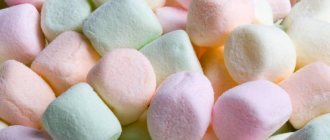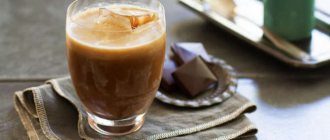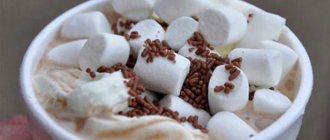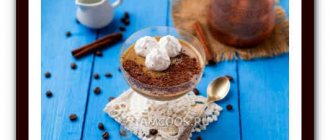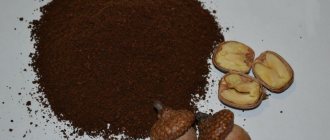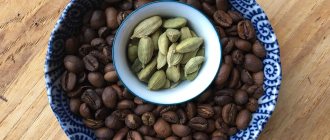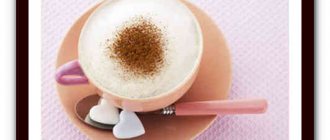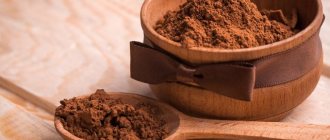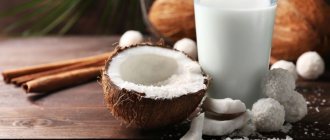Marshmallow: description, application, benefits
Marshmallow is a traditional American confectionery product that tastes like a soufflé or marshmallow. The delicacy from the USA may resemble marshmallows (due to the presence of egg white in some recipes), but its consistency is literally more airy. In the 21st century, marshmallows are used as an independent “snack”, an additive to drinks, and a decoration for desserts and cakes. The product with a soft structure is available in different shapes and colors, expanding the capabilities of beginners and professional confectioners.
Marshmallow Recipes
Marshmallow at home is quite easy to prepare if you follow the proportions and technology. The products are the most common. The only thing you need to have is a mixer - it is difficult to beat the mixture by hand to the desired consistency.
One of the non-standard (with egg whites) recipes for making this sweet is very simple, as a result we get tasty marshmallow pieces without chemical additives.
- So, take 400 g of granulated sugar, 350 g of water, 50 g of gelatin, 2 egg whites, 15 ml of corn syrup (can be replaced with invert syrup); for rolling - half a glass of powdered sugar and half a glass of potato starch.
Soak the gelatin in half the water for 30 minutes. In a saucepan, mix the remaining water, sugar, corn syrup, put on low heat, heat, stirring, until the sugar dissolves.
Beat the whites until foamy, add a tablespoon of sugar and beat again.
Pour the heated syrup into the gelatin and whisk gently. At this stage, you can beat by hand (or at low speed with a mixer) until the gelatin is completely dissolved in the syrup.
Then combine the mixture with the egg whites and beat in a mixer at high speed until a thick, fluffy mass is obtained.
Pour into a wide bowl lined with parchment greased with vegetable oil and level the surface. When it thickens, cut into pieces and roll thickly in a mixture of powder and starch. Place in a colander and shake off excess powder.
Photo: Depositphotos
Marshmallow with this method of preparation turns out sweet and airy. It will be a great addition to hot coffee or cocoa.
If you want to get sweetness with a natural fruity taste and aroma, use berry juice instead of water. Also, in the dessert recipe, instead of water, you can use brewed coffee or cocoa - we will get the corresponding marshmallow taste.
And in conclusion - a more complex (or rather, longer in terms of cooking time) classic recipe .
- You will need: 200 g of water, 400 g of granulated sugar, 25 g of gelatin, 150 g of invert syrup, 1 teaspoon of vanillin, a pinch of salt; cornstarch and powdered sugar for dredging.
- For invert syrup you will need: 300 g of sugar, 130 g of water, 1 g of citric acid (one third of a level teaspoon), soda on the tip of a knife.
A few words about invert syrup: it has anti-crystallization and moisture-binding properties; it can be used instead of corn syrup, molasses, maple syrup; confectionery products prepared with it are not sugared during storage.
First, cook the invert syrup . Pour water into a saucepan, add sugar, put on fire, bring to a boil while stirring, add citric acid, close with a lid and leave on low heat for 30 minutes, during which time the syrup will acquire a slightly golden hue. We dilute the soda in two teaspoons of water and pour it into the slightly cooled syrup. After 5-10 minutes, the foam formed during the cooking process will settle to the bottom.
Photo: Depositphotos
Next step: pour gelatin with 100 grams of cold boiled water.
While the gelatin is dissolving, cook the syrup: pour 150 g of invert syrup into the pan, the remaining water, add sugar and salt, bring to a boil while stirring, cook over low heat for 5-6 minutes.
Heat the soaked gelatin in a steam bath until completely dissolved. Next, pour it into a large bowl and beat with a mixer for 2-3 minutes. Continuing to beat the gelatin, gradually pour the hot syrup into it.
Beat at high speed for about 8 more minutes, add vanillin, continue beating until you get a thick viscous mass.
Pour the resulting mass into a pastry bag and squeeze the strips onto a baking sheet lined with parchment (the parchment must be greased with vegetable oil).
Sprinkle the frozen marshmallow strips with a mixture of powdered sugar and cornstarch. Lubricate the knife or scissors with vegetable oil and cut the strips into pieces, roll them in a mixture of powder and starch, place them in a colander and shake off excess powder.
Photo: Depositphotos
Now you can brew a cup of coffee, throw a few marshmallows on top and enjoy the variety of coffee flavors and aromas. If you pre-fry the pieces in a frying pan, the flavor shades will change - light notes of caramel will appear.
And if you use your culinary imagination when making marshmallows, you will get a natural sweetness with various additives, tastes and aromas that will certainly appeal to adults and children.
Story
A number of sources indicate that the first “American marshmallow” was a medicinal extract of Althea root, a herbaceous plant of the Malvaceae family (hence the name “marsh mallow”). There are references that back in Ancient Egypt, the elite and members of society “close to the gods” used a decoction of the roots to treat coughs, relieve sore throats and heal wounds.

In the 19th century, the owners of confectionery shops in France invented their own method of making a “sponge-soft” dessert mass: the dried roots of the plant were beaten with sugar, water and egg whites.
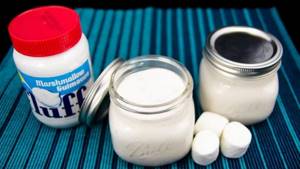
The discovery of new technologies in the food industry made it possible to launch mass production of familiar confectionery products in the United States at the beginning of the 20th century. The healing ingredients were replaced by practical ones - corn syrup, starch, gelatin.
The light, sweet delicacy has become a favorite among residents of the United States. They take it on hikes, on picnics, and treat it to children and guests. Marshmallows can be cooked and can be part of unexpected desserts.
Composition of marshmallow and a little history
Large manufacturers (for example, Guatemalan candies or The Marshmallow Company) strictly monitor the preservation of the classic recipe of white marshmallows with a light vanilla aroma. The shape of the finished candies can be cylindrical, square, round or even spiral.
The sweets got their name from the English words “marsh mallow”, which are translated as “marsh mallow”. It was this plant that was part of the original composition of marshmallow.

Classic marshmallows
Main ingredients:
- sugar;
- corn syrup;
- gelatin;
- water.
In addition to white ones, yellow-pink spirals for tea, coffee or sweet cocktails are very popular in the USA and Europe. In general, marshmallows come with nuts, glaze, fruit toppings and fillings - the choice is huge.
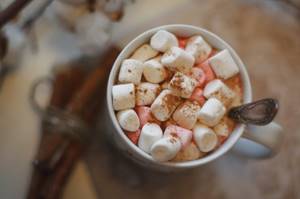
Flavored coffee
Composition and nutritional value
The molecular structure is a simple sugar syrup, whipped with stabilizing agents (polysaccharides, etc.). A typical marshmallow consists of: sugar, water, air (!), a foaming agent (usually protein), flavorings and/or colors (at the manufacturer's discretion). The type of sugar or agent used depends on the characteristics of the product laid down by the technologists. Can be used:
- Albumin is a protein mixture of egg whites that creates a “sponge effect.”
- Gelatin is an aerating protein that consists of collagen and when combined with water forms a thermally reversible gel. This is why marshmallows can literally melt right on your tongue.
- Corn syrup (glucose syrup) – prevents crystallization of other sugars in the composition, eliminates excessive sweetness and improves aftertaste.
- Invert sugar – makes marmshallow soft and prevents it from drying out due to the high moisture content in the molecules.
The structure of marshmallow resembles a sweet sponge filled with air microbubbles (which reaches 50% in the composition of the treat). All this gives an amazing taste and special sensations.
Nutritional value of marshmallows:
| Per gram: 100 |
| Calories 318 |
| Fat 0.2 g |
| Saturated fat 0.1 g |
| Polyunsaturated fatty acids 0 g |
| Monounsaturated fatty acids 0.1 g |
| Cholesterol 0 mg |
| Sodium 80 mg |
| Potassium 5 mg |
| Carbohydrates 81 g |
| Dietary fiber 0.1 g |
| Sugar 58 g |
| Proteins 1.8 g |
| Vitamin A | 0 IU | Vitamin C | 0 mg |
| Calcium | 3 mg | Iron | 0.2 mg |
| Vitamin D | 0 IU | Vitamin B6 | 0 mg |
| Vitamin B12 | 0 µg | Magnesium | 2 mg |
What is marshmallow in cooking?
Marshmallows are often confused with marshmallows, marshmallows, and even considered a type of marmalade. In fact, the delicacy in its composition is closest to marshmallow or soufflé. The classic recipe is based on sugar or corn syrup and gelatin.
The name itself can be translated as “marsh mallow”, because traditionally, the sweetness was made from the root of a plant we call marshmallow. Over time, instead of the sticky mass of marshmallow root, they began to use gelatin and starch. But the name stuck and is still used today.
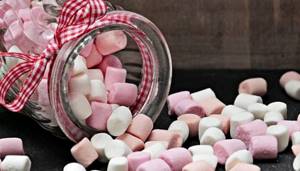
To diversify the taste and appearance of this sweet, vanilla (or vanilla sugar), cinnamon, nuts, flavorings and dyes are used in its production. Stores sell marshmallows of various sizes and shapes, covered with caramel or chocolate glaze.
Classic candies are shaped like round pillows and do not contain additional coloring or flavoring additives. They are white in color and have a neutral taste and aroma. This is exactly the dessert that is prepared at home.
How to eat marshmallows
Marshmallow is an unusual sweet. They eat it not only as a ready-made treat with tea or coffee. Since they do not have a pronounced sweet taste, they are often added to drinks or desserts. They are used to prepare mastic for decorating cakes and pastries.
But, you can use it as a hearty snack or regular sweets for tea. Sweets are sold in all stores where you can buy regular confectionery products. On sale they are completely ready to eat, so you can simply eat them from the pack.

Where do you add marshmallows?
One of the most common ways to consume marshmallows is to add to hot chocolate, cocoa or coffee. This method came to us from the United States. In our coffee shops, following American establishments, these drinks are increasingly sprinkled with miniature candies.
Coffee with marshmallows is becoming an integral part of the menu of most cafes. Children are offered hot chocolate or cocoa with their favorite treat.
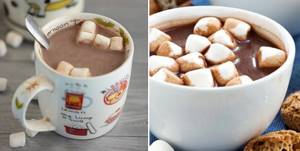
Use Cases
Marshmallow is a ready-made product that can be consumed “out of the package” as a dessert. The unique taste, the presence of melting components in the composition, the airy consistency and convenient shape open up a lot of possibilities for using the product.
Additive
Marshmallows can be decorated with a glass of cocoa for children, added to an alcoholic cocktail or Irish coffee with whiskey, or made part of a warming rum or cognac tea. The sugar base of the treat gives the drinks the right balance of sweetness.

Classic recipes
In 1927, S'more appeared in the United States - an unusual recipe that became part of the American outdoor menu. First, the marshmallows are roasted over a fire: the caramel crystallizes on the outside, forming a crust, and a stretchy air mass remains inside.

The resulting fried product is placed along with chocolate pieces between two layers of Graham cracker. Juicy, crispy and very tasty sandwich.
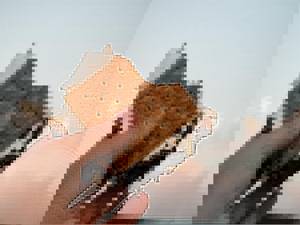
Bold Recipes with Marshmallows
Marshmallow and creativity are compatible things. Here's what pastry chefs and chefs have already invented:
- Pizza is a dessert option with chocolate.
- Rice dessert.
- Popcorn with caramel and marshmallows.
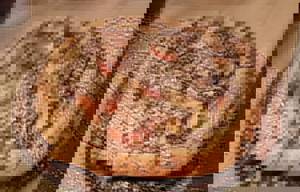
How to use
But knowing that marshmallows are a sweet means knowing almost nothing. There are many ways to consume this traditional American delicacy, here are the main ones:
- Large white cylinders or cubes are fried over a fire until a caramel crust appears. The first mention of this method of preparing s'mores (from the English s'more - a little more) dates back to 1927 (American Girl Scout Directory).
- Adding small marshmallows to hot coffee or chocolate. The sweets will melt a little and create a fragrant thick foam.
- Incredible delicious discoveries can be made by using sweets as an addition to fruit and berry salads, ice cream, yogurt or chocolate fondue.
- Use as the main ingredient when making homemade ice cream.
- Cookies with marshmallows and chocolate. Making them is very simple: put marshmallow on half of the cookies and chocolate pieces on the rest. We heat them up (205 degrees, 5 minutes) and, after the filling has melted, take them out and connect the halves. Bon appetit!
- In large supermarkets you can also find marshmallow cream, which is spread on biscuits or sweet crackers.
- Application in confectionery - making mastic for cakes and pastries.
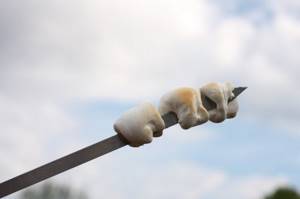
Burning sweetness
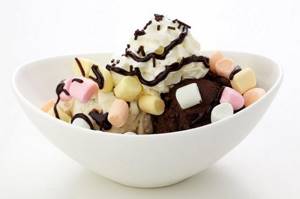
Ice cream
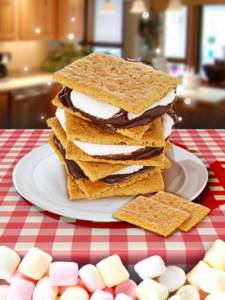
Homemade cookies
Application in confectionery
For a confectioner, marshmallows are a component of cakes, baked goods, and a beautiful decoration. The presence of gelatin allows you to transform the shape: the product can easily be turned even into cream. The rest is a matter of imagination. Marshmallow will give any dish a new flavor palette.
Cake mastic
Marshmallow mastic will be soft and easy to make. You can use it to make shapes or cover the entire cake. The work will require skill, but the result will fully justify itself.
Marshmallow mastic can be mixed with a gelatin analogue in a ratio of 3:1 or 4:1 - this way the finished flowers will take less time to dry.
Filling and decoration for baking
When making muffins or cupcakes, marshmallows can be added directly to the dough - some will melt, some will remain in the form of beautiful pieces. If you melt the product with cream, you can fill the cupcake with the resulting mixture. Sponge cakes will taste better if you coat them with cream made from melted marshmallows and cream.

With egg white
- Time: 20 minutes.
- Number of servings: 4 persons.
- Calorie content of the dish: 300 kcal.
- Purpose: for breakfast.
- Cuisine: Russian.
- Difficulty: easy.
Another marshmallow recipe that is suitable for those who are on a diet, but still want to enjoy something sweet. The secret is that you can add as much sweetener to this airy treat as you like . It is best to cool egg whites before beating. This way they will respond better to your efforts and reduce the time you spend using the mixer.
Ingredients:
- egg white – 3 pcs.;
- gelatin – 30 g;
- powdered sugar – 100 g;
- cornstarch for sprinkling;
- vanillin;
- water – 60 ml.
Cooking method:
- Pour gelatin with water and leave to swell.
- Beat the whites into a thick foam.
- Heat the gelatin and add powdered sugar.
- Gently pour the gelatin into the egg whites, whisking with a mixer.
- Add vanillin, continue beating gelatin and egg whites.
- Pour the resulting mixture into molds or place in an even layer.
- Sprinkle the finished marshmallows with cornstarch and powdered sugar.
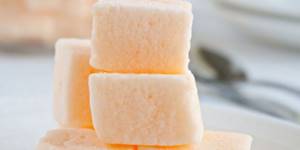
- Why global coronavirus quarantine could become more dangerous than the epidemic itself
- The most unfavorable forecast for the coronavirus epidemic has been announced
- 9 Symptoms of a Brain Aneurysm
Decoration and fancy desserts
Marshmallow can be used to decorate anything: cakes, casseroles, charlottes. They are suitable for creating a filling when baking your favorite fruits and vegetables. From this delicacy you can create snacks and dishes that will delight children. Just take the cooled product, pour chocolate over it, let it cool - and now the finished candy on a skewer is ready! The colorful versions can be made into a marbled sauce to dip the fruit into.
Marshmallow - one product, authentic taste, many variations, unlimited possibilities for use in the kitchen. It is possible to make this delicacy at home; the process does not take much time and effort. You can buy everything you need to make marshmallows in our online store - and start your adventure!
How is marshmallow made?
Now in the world you can count on one hand the number of confectionery shops where mini marshmallows are prepared by hand - most of the product is produced in industrial conditions. The production process of the famous American dessert is divided into five stages.
The first step is to prepare a thick mixture of sugar, water and corn syrup in large vats. Then it is boiled, after which a gelling agent is added and heated for some time at a temperature of 115 degrees.
At the second stage, the resulting mass is filtered through a sieve to filter out any foreign impurities and whipped, after which it increases in volume by about 3 times. At this stage, flavor enhancers, dyes and flavors are also added.
The third stage includes the process of primary cooling in a heat exchanger and pumping the mass with air to make it more fluffy.
During the fourth stage, future marshmallows enter pumps, with the help of which they are squeezed through special tubes onto a conveyor in the form of long “ropes”. Then they are cut into small pieces and take the shape that is already familiar to us.
After cutting, the marshmallows are sprinkled with cornstarch to prevent stickiness and maintain their shape once they are packaged.
At the fifth stage, the candies are cooled with cold air, excess starch is removed and packaged. After which fresh marshmallows are sent to store shelves where 99% of Americans rush to buy them. The recipe for this dessert is presented in the video:
